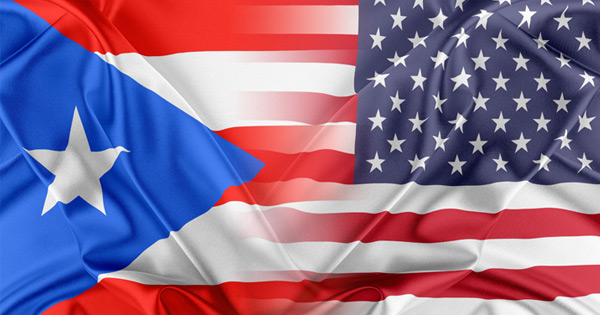HAPPY APRIL FOOL’S!
No, Puerto Rico has not been declared a State of the US (and probably never will in the near future).
by Christina Colón
TERRITORY. COLONY. COMMONWEALTH. “An island surrounded by water, big water.” Boriquén.
In 2017, when Hurricane María hit and Puerto Ricans were left without power for months, people around the world Googled: “What is Puerto Rico?”
A strip of land 100 miles long and 35 miles wide in the Caribbean Sea. Home to nearly 3.2 million people, “proud people,” as my abuela says. It is an island of people in la brega, an expression without a translation that encapsulates “a state of mind,” Alana Casanova-Burgess explains in La Brega, a WYNC podcast series. It’s the feeling of always being in the struggle, the hustle. “It shows us something about our ‘Puerto Ricanness,’ our history, our present,” she says. “And maybe where we’re headed.”
This year, Steven Spielberg will release his screen revival of the hit musical West Side Story. It’s been 60 years since Rita Moreno as Anita sang, “I like to be in America” from a staged New York City rooftop (muddying the waters as to whether Puerto Rico was “America”). As a new Anita emerges, Congress will debate the Puerto Rico Statehood Admission Act, introduced in March. If the act is approved, then a vote will be held in Puerto Rico on whether to become a state.
————————
About April Fool’s: April Fools’ Day customs date back to at least Renaissance Europe, but it’s likely the tradition originated long before then.
Some historians have linked April Fools’ Day to the ancientRoman festival of “Hilaria,” where at the end of March, people would come together to commemorate the resurrection of the god Attis. It was a celebration of renewal in which revelers would dress up in disguises and imitate others.
It’s also possible that the medieval celebration of the Feast of Fools, where a mock bishop or pope was elected and church customs were parodied, could have inspired the day.
Some gullible “fish” might also explain the tradition
Other historians believe April Fools’ Day has its origins in the 16th century, when France switched from the Julian calendar to the Gregorian calendar.
The Julian calendar began in March with the spring equinox and was celebrated until April 1. By switching to the Gregorian calendar, the new year would now begin on Jan. 1.
News traveled slowly back then, and not everyone knew about or was willing to change when to celebrate the new year. Those who continued to celebrate in the spring were often ridiculed and made the butt of jokes.
Some pranks included having a paper fish placed on a person’s back as they were called “poisson d’avril,” or “April fish.”
One of the first knownreferences to this term, “poisson d’avril,” is found in a 1508 poem written by Eloy d’Amerval. The phrase itself doesn’t necessarily mean there was a holiday on April 1, but the idea of the “April fish” is that fish were more plentiful in the spring and thus easier to catch. In other words, an “April fish” was more gullible than fish caught in other seasons.
In 1561, an early, clear-cut reference to April Fools’ Day appears in a Flemish poem written by Eduard de Dene. In the poem, a nobleman sends his servant out on a series of wild errands. The servant eventually realizes that these are “fool’s errands” because the date is April 1.
Scholars say one of the first mentions of an April Fools’ Day in English appears in John Aubrey’s 1686 book Remaines of Gentilisme and Judaisme, which reads, in part: “We observe it on the first of April. And so, it is kept in Germany everywhere.”
Even in 1760 there was speculation as to the origins of the holiday, with a line in Poor Robin’s Almanac reading:
“The First of April some do say. Is set apart for all Fool’s Day. But why the people call it so. Nor I nor they themselves do know”
